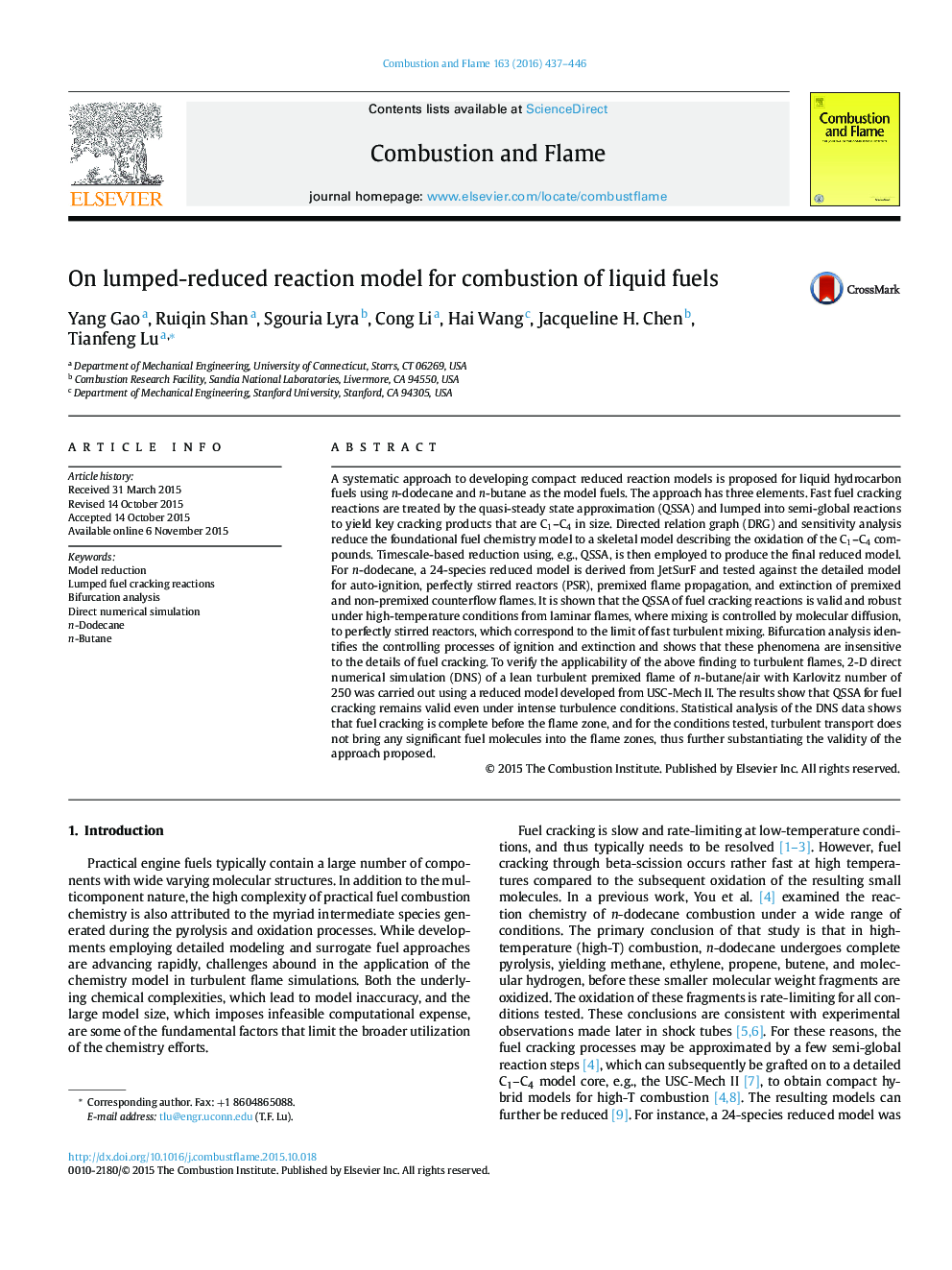| Article ID | Journal | Published Year | Pages | File Type |
|---|---|---|---|---|
| 6594373 | Combustion and Flame | 2016 | 10 Pages |
Abstract
A systematic approach to developing compact reduced reaction models is proposed for liquid hydrocarbon fuels using n-dodecane and n-butane as the model fuels. The approach has three elements. Fast fuel cracking reactions are treated by the quasi-steady state approximation (QSSA) and lumped into semi-global reactions to yield key cracking products that are C1-C4 in size. Directed relation graph (DRG) and sensitivity analysis reduce the foundational fuel chemistry model to a skeletal model describing the oxidation of the C1-C4 compounds. Timescale-based reduction using, e.g., QSSA, is then employed to produce the final reduced model. For n-dodecane, a 24-species reduced model is derived from JetSurF and tested against the detailed model for auto-ignition, perfectly stirred reactors (PSR), premixed flame propagation, and extinction of premixed and non-premixed counterflow flames. It is shown that the QSSA of fuel cracking reactions is valid and robust under high-temperature conditions from laminar flames, where mixing is controlled by molecular diffusion, to perfectly stirred reactors, which correspond to the limit of fast turbulent mixing. Bifurcation analysis identifies the controlling processes of ignition and extinction and shows that these phenomena are insensitive to the details of fuel cracking. To verify the applicability of the above finding to turbulent flames, 2-D direct numerical simulation (DNS) of a lean turbulent premixed flame of n-butane/air with Karlovitz number of 250 was carried out using a reduced model developed from USC-Mech II. The results show that QSSA for fuel cracking remains valid even under intense turbulence conditions. Statistical analysis of the DNS data shows that fuel cracking is complete before the flame zone, and for the conditions tested, turbulent transport does not bring any significant fuel molecules into the flame zones, thus further substantiating the validity of the approach proposed.
Related Topics
Physical Sciences and Engineering
Chemical Engineering
Chemical Engineering (General)
Authors
Yang Gao, Ruiqin Shan, Sgouria Lyra, Cong Li, Hai Wang, Jacqueline H. Chen, Tianfeng Lu,
